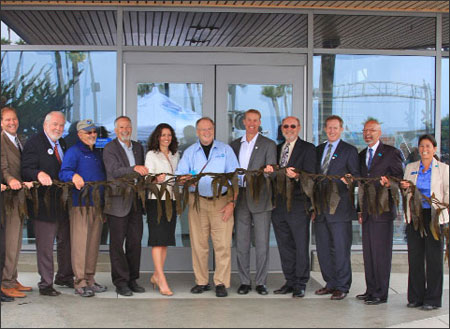 | |||||||||
|
|
|
|
|

"Mr. Speaker, I rise today to reflect on one of the most important pieces of federal legislation impacting our coastal, great lakes and ocean resources stretching from Fagatele Bay in American Samoa to the Monitor National Marine Sanctuary along the East Coast. The National Marine Sanctuaries Act, which was signed on October 23, 1972, recognized the value of these national treasures; designating marine protected areas for current and future generations. 40 years later, communities across the country have seen real dividends from these federal investments and are expressing their interests in protecting their own waters. Reactivation of NOAA’s Site Evaluation List, a scientifically rigorous and publicly reviewed list of sites, is being considered as part of the Strategic Action Plan to implement our National Policy for the Stewardship of the Ocean, Our Coasts, and the Great Lakes. It would bring a renewed commitment to conserve, protect, and enhance the biodiversity, ecological integrity and cultural legacy of our nation's system of marine protected areas. In my experience, the most remarkable thing about the National Marine Sanctuary Program is the transformation which occurs when communities recognize they have the opportunity become stewards of their local marine environment. I cannot emphasize enough that ours and future generations will increasingly depend on a healthy ocean -- for ecological, economic, educational, scientific, social, cultural and recreational benefits, as well as for the food we eat. For me, the best example is the Monterey Bay National Marine Sanctuary, which this year celebrates its 20th Anniversary. The Monterey Bay National Marine Sanctuary emerged from a collaboration of local officials, civic minded citizens, environmentalists and many others who were concerned about the possibility of oil drilling on the Central Coast. Their hard work resulted in the establishment of the largest marine sanctuary in the Continental U.S. It goes down more than 2 miles and is almost as deep as the Rockies are tall. Its undersea mountain – “Davidson Seamount” – is higher than any coastal mountain, 7480 ft. tall, and it supports one of the most bio-diverse ecosystems in the world. I am fortunate to represent a congressional district that has one of
the greatest synergies of ocean science and research in the world.
And it is through increased understanding of our marine sanctuaries
that we become better stewards of our blue planet. The National
Marine Sanctuary Program is charting the course forward through
research and education and it is only fitting that, on this
anniversary of the National Marine Sanctuaries Act, we in Congress
commend the National Marine Sanctuaries Act and all of our nation’s
sanctuaries for their significant work in advancing understanding
and protection of the world's oceans."
|
|
||||
|
|||||||||





